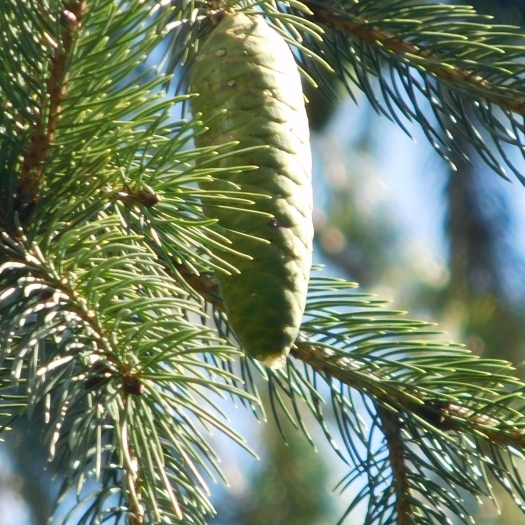Morinda Spruce
(Picea smithiana)
Morinda Spruce (Picea smithiana)
/
/

© Stephen Thorpe
CC BY 4.0
Image By:
© Stephen Thorpe
Recorded By:
Copyright:
CC BY 4.0
Copyright Notice:
Photo by: © Stephen Thorpe | License Type: CC BY 4.0 | License URL: http://creativecommons.org/licenses/by/4.0/ | Uploader: stephen_thorpe | Publisher: iNaturalist |

























Estimated Native Range
Summary
Picea smithiana, commonly known as Morinda Spruce or West Himalayan Spruce, is an evergreen tree native to the montane temperate forests of the western Himalayas, including regions of northeast Afghanistan, northern Pakistan, and central Nepal. It thrives at altitudes between 7874 and 11811 feet, where it is a component of coniferous forests, often found alongside species such as Deodar Cedar (Cedrus deodara), Blue Pine (Pinus wallichiana), and Pindrow Fir (Abies pindrow). Morinda Spruce can reach a height of 131-180 feet with a trunk diameter of 3-7 feet. It exhibits a conical crown with level branches and pendulous branchlets, creating a distinctive silhouette. The leaves are needle-like, mid-green in color, and the cones are broad cylindric-conic, maturing to a buff-brown hue.
Morinda Spruce is valued for its stately form and is often used as a focal point in large gardens and parks in western Europe. Its needle foliage and attractive cones contribute to its ornamental appeal. While it is grown for its beauty, it is also cultivated for timber and paper production. In cultivation, it requires a cool, moist climate and well-drained, acidic soil. It prefers full sun but can tolerate light shade. Morinda Spruce is relatively low-maintenance but can be susceptible to pests such as aphids and diseases like spruce needle rust. It is not known to be invasive outside its native range.CC BY-SA 4.0
Morinda Spruce is valued for its stately form and is often used as a focal point in large gardens and parks in western Europe. Its needle foliage and attractive cones contribute to its ornamental appeal. While it is grown for its beauty, it is also cultivated for timber and paper production. In cultivation, it requires a cool, moist climate and well-drained, acidic soil. It prefers full sun but can tolerate light shade. Morinda Spruce is relatively low-maintenance but can be susceptible to pests such as aphids and diseases like spruce needle rust. It is not known to be invasive outside its native range.CC BY-SA 4.0
Plant Description
- Plant Type: Tree
- Height: 100-150 feet
- Width: 20-30 feet
- Growth Rate: Slow
- Flower Color: N/A
- Flowering Season: Non-Flowering
- Leaf Retention: Evergreen
Growth Requirements
- Sun: Full Sun
- Water: Medium
- Drainage: Medium
Common Uses
Border Plant, Low Maintenance
Natural Habitat
Montane temperate forests of the western Himalayas
Other Names
Common Names: Morinda Spruce, Indian Spruce, West Himalayan Spruce, Chang Ye Yun Shan, Himalajska Smreka
Scientific Names: , Picea smithiana, Abies khutrow, Abies morinda, Abies smithiana, Picea khutrow, Picea morinda, Picea smithiana subsp. nepalensis, Picea smithiana var. nepalensis, Picea smithiana var. pendula
GBIF Accepted Name: